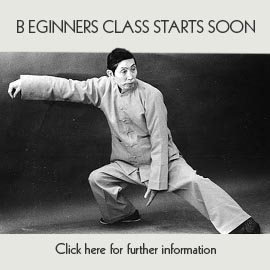Practising Tai Chi and its principles is like any other skill or discipline. Practice, regular and committed, is said to yield benefits and advanced understanding. It is also meant to provide a clearer comprehension of what it is we are actually doing, to separate the wasteful from the useful elements of our experience.
However there are several kinds of practice, and we need to be mindful to discern one from the other so we do not waste our time and develop bad habits or worse create bad health.
1) Incorrect Practice: this is characterised by not abiding by Tai Chi principles (internal and external) and thus attracting bad health and possible injury. Our bodies have its limits physically speaking in its range and boundaries i.e. how far a joint will open, how much exertion we put our heart and circulatory system, or even practising if very ill when the body just needs rest.
These kinds of practise are likely to do nothing more but injure and harm our health.
Antidote: Pay careful attention to instructions, and when practising alone consider the effects of your practice. When it’s done does it cause pain and discomfort? Does it cause hyperventilation or make your heartbeat rapidly? Does it make you get out of breath and do you feel weaker for doing it? One must recognise the difference between the body being exercised and exercise that weakens the body.
2) Infrequent practice: even if we practice correctly if we leave large uneven gaps between our practice we cannot expect to gain good consistent results. Imagine when you get absorbed in something like a project or a task around the house and you knuckle down to it not because you want to get it out of the way, but because you genuinely want to correct something and solve a problem. This motivates us to further our discoveries and seek out more good experience. When we have gaps we can start to get tired and notice old habits slipping back in. Our clarity of mind can start to dull and our sensitivity can lose its subtlety.
Antidote: be realistic if you have a hectic life with genuine commitments, put aside even 5 minutes a day and dedicate yourself to heartfelt practice. Even be spontaneous about where you do your practice. Although in the beginning it’s good to practice somewhere consistent, when you start to gain good experience you can practice anywhere. Fitting in a small portion of practice somewhere should feel like your body needs it and desires it. This kind of motivation will find a way to make your practice more frequent. Then the effects of frequent practice mean you speed up in your development.
3) Too little practice: even if our practice is regular the amount of time we spend doing Tai Chi has a contributory effect on us and our health. If we have busy lives then we may not be able to spend too much time when we practice, but the fact we do is encouraging. Prof Cheng Man-ching (Dr Chi Chiang-tao’s main teacher) said that even 10-15 minutes of diligent practice a day will have great effects on your health. However if we require more than good health and wish to discover the deeper meaning of Tai Chi or if we want to be able to teach it one day even, we need to commit more time to our own personal practice.
Antidote: If we wanted to read a book fast and get the gist of the main story we could do it quickly (even read a summarised version on Wikipedia!). If we wanted to penetrate the story and characters and truly understand all aspects and subtleties of the story we take our time. We give more time to the book, and then the story has a broader impact on us. We could even say we become an expert on the story, or even mastered it. This is the same with our Tai Chi practice. We don’t however have to keep expanding our practice time as we will eventually run out of hours in the day. We can reach a natural degree of healthy committed practice where we also advance in a consistent manner too.
So with our Tai Chi we can simply improve it by being mindful about the quality, the regularity and actual amount of practice we do. Our aims and goals may vary and while some want to become masters others just want good health and feel good in their own bodies. Both targets are good, but in order to achieve them we must be careful with the tool we use as it helps characterise what we produce in the end. Our practice is the tool our product is our happiness.
Phil Vickery (2012)

